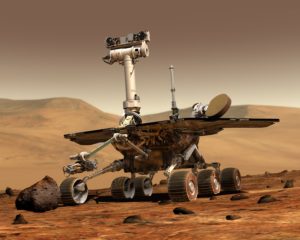Emerging technology on cruise ships
When it comes to future technology in the travel industry, cruise lines have long been ahead of the game. Even before the global pandemic began in March 2020, cruise lines were looking at introducing emerging technology. However, the Covid-19 pandemic has acted as a catalyst to cause the industry to speed up the process and improve the passenger experience, especially in relation to health protocols.
At the Passenger Ship BoardingTerminal
One of the first aspects of the use of future technology in improving the health of cruise passengers will be the use of touchless system technology. This will apply to such things as signing bills and scanning passports. The aim will be to avoid any direct human interaction.
Both Google and Apple are already developing “track-and-trace” apps that can alert crew to whether someone has been near an infected person. Other systems will include purification and pathogen removal for the whole of the facility.
Onboard Changes on Cruise Ships
Passenger Ship embarkation will involve biometric identification and we are likely to see disinfection tunnels leading to the boarding terminal. Already most major cruise lines offer online check-in which means that you can get your boarding pass over the phone. Almost certainly, thermal imaging cameras will be placed at entry points.
Some Cruise Lines already have on-board artificial intelligence systems similar to Amazon Alexa.
MSC has an on-board voice-activated assistant named Zoe. In future, on-board health protocols will be set up to include the use of touchless technology. Phone apps will be downloaded to do such things as unlock the door as you approach, so guests won’t need to touch their cabin door handle.
Every cabin will be fitted with AI-powered voice-activated information speakers.
Passengers will use apps on their mobile phones to do many things. They will act as key-cards to open your cabin, to order and to pay for drinks, make bookings at restaurants, shows and the spa, and to book shore excursions. You will even be able to check your account, track your loved ones and control the lights and temperature in your cabin. This will avoid the use of shared touchscreens that cruise ships frequently use to sell tours and book activities.
Most cruise passengers are familiar with the daily newsletters and invitations that are slid under the door of the cabin. Such things, along with meal menus will become a thing of the past, to be replaced by digital emerging technology replacing all paper-based information and avoiding touching surfaces.
Physical queueing will be limited by the use of virtual queueing apps to limit how many people will stand together in a certain area at a given time. This will avoid overcrowding at lunch buffets, in the fitness centre or at the pool. Passengers will be able to order food and drinks and have them delivered to specified locations on board.
Robots on board Cruise Ships
Germ-zapping robots are already being used in hotels, restaurants and food processing facilities. These robots use broad-spectrum UV light to quickly decontaminate rooms and public spaces. Similar robots will be able to autonomously enter cabins and sanitise the room after housekeeping staff have left.
But what about the Personal Touch on Cruise Ships?
What cruise line operators are very conscious of is that one of the main reasons people take cruises is to enjoy the socialisation that is a major part of the experience and such innovations as physical distancing need to be carefully managed to preserve this important aspect of cruising.
One key feature of the cruise ships of the future will be the social distancing protocol, as personal interaction with shipboard staff is very important in creating memorable experiences on cruise ships.
What Cruise Lines Are Doing With Next-Generation Cruise Technology
Read more about Artificial Intelligence into the future
 Today, their company, Starship Technologies, has offices around the world and its delivery robots have travelled over 200,000 miles delivering over 50,000 orders in many neighbourhoods and on university campuses. At George Mason University, its fleet of 25 robots makes it the largest robot food delivery service on a university campus.
Today, their company, Starship Technologies, has offices around the world and its delivery robots have travelled over 200,000 miles delivering over 50,000 orders in many neighbourhoods and on university campuses. At George Mason University, its fleet of 25 robots makes it the largest robot food delivery service on a university campus.



















